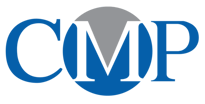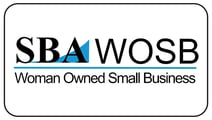There are countless articles written about productivity hacks and how to get more done, be more effective, and improve your overall performance at work (and home).
A lot of these hacks involve trying out the newest tech tool or practicing some time management methodology advocated by an expert.
All of these hacks can be effective, but there is one hack that costs nothing and can help you restore alertness, enhance performance, and reduce mistakes and accidents.
What is this hack? Taking a power nap.
Before we talk about power napping, we have to address one of the biggest productivity killers in business today – the lack of sleep that employees are getting.
In the recent Harvard Business Review article “Sleep Well, Lead Better,” they paint a very dismal picture:
According to the most recent data from the National Health Interview Survey, the proportion of Americans getting no more than six hours a night (the minimum for a good night’s rest for most people) rose from 22% in 1985 to 29% in 2012.
An international study conducted in 2017 by the Center for Creative Leadership found that among leaders, the problem is even worse: 42% get six or fewer hours of shut-eye a night.
Why is sleep such a big deal? It is because:
… it allows us to consolidate and store memories, process emotional experiences, replenish glucose (the molecule that fuels the brain), and clear out beta-amyloid (the waste product that builds up in Alzheimer’s patients and disrupts cognitive activity).
By contrast, insufficient sleep and fatigue lead to poor judgment, lack of self-control, and impaired creativity. Moreover, there are lesser-known secondary effects in organizations.
My research shows that sleep deprivation doesn’t just hurt individual performance: When managers lose sleep, their employees’ experiences and output are diminished too.
Why is it that even though research shows that sleep deprivation leads to decreased performance we all still disregard it? The simple answer is that we have unfortunately given sleep deprivation a heroic status in business.
- We all marvel at the person who can do it all with only three to four hours sleep.
- We lionize the teams and individuals who do an all-nighter to get a project done.
- We think that we need to respond to the pre-dawn email sent by our boss to show that we are on the team.
This all leads to a sleep-deprived team that will not perform at its best.
The easy answer is not to have everyone get the recommended seven to eight hours of sleep needed to be at their best. You cannot control the personal lives of your employees.
What can be done is to consider allowing and condoning power napping at work.
Before I get to the benefits of a power nap, I will need to address how napping is looked down upon here in the USA. Many consider napping as being loafing, wasting time, showing weakness, and being just plain weird.
I remember years ago when I was an Assistant Product Manager at Borden, my VP of Marketing asked me to talk with one of the other APM’s about her napping in her office during lunch. The VP thought it was weird and unprofessional and wanted it to stop (lucky me for having to be the one to talk with her).
I also remember reading about the PR dustup that happened when Brian Halligan, the CEO of HubSpot, created when he talked about napping during a New York Times article about the culture of HubSpot and their upcoming IPO. All of the important things that Halligan talked about was buried under the lead that Brian Halligan loves napping (there is now 23,100 Google search results for Brian Halligan and Napping).
Why is napping a good thing? The HBR article mentioned above says that napping can:
- speed up cognitive processing
- decrease errors
- increase stamina for sustained attention to difficult tasks later in the day.
Need some more proof? Here is an Inc.com article (Why Power Napping Can Improve Your Productivity--and 4 Ways to Do It Right) lists out the benefits of the power nap:
Power naps do more than help us catch up on sleep after a night of tossing and turning. They've also been shown to improve cognitive performance in the following ways:
- They facilitate creative problem solving and logical reasoning.
- They boost the capacity for learning.
- They enhance the ability to remember information.
- They improve mood and reduce stress (which impairs cognitive performance when left unchecked).
- They decrease the risk of making errors on the job.
- They increase mental alertness and reduce fatigue.
Wait – there’s more. Here is the science behind the 20-minute power nap (Source: Science Says Napping Increases Productivity):
The 20-minute nap, also known as the Power Nap, is one of the best ways to get an extra burst of energy and make it through the rest of the afternoon.
It enables you to get the most out of your short nap without worrying about being groggy or needing extra caffeine to wake up.
The Mythbusters proved the efficacy of the power nap during a 24-hour test on a boat — taking four 20-minute naps every six hours during a 24-hour period helped to make them more efficient and accurate during their tests.
As the benefits of power napping become more accepted, we will see that this will become more mainstream regarding accepted workplace behavior.
We may not be at the tipping point just yet.
In the recent SHRM magazine, they provided the following statics from Amerisleep that says that 70% of people in technology admit to “snoozing during working hours.” The nature of this question (are people admitting to something that they should not be doing?) shows that napping is still not yet an accepted workplace behavior.
Some companies have designated napping areas (and even sleep pods). Let’s hope that this trend will migrate to the mainstream. A well rested and restored workforce can be an organization’s most powerful productivity gain.



